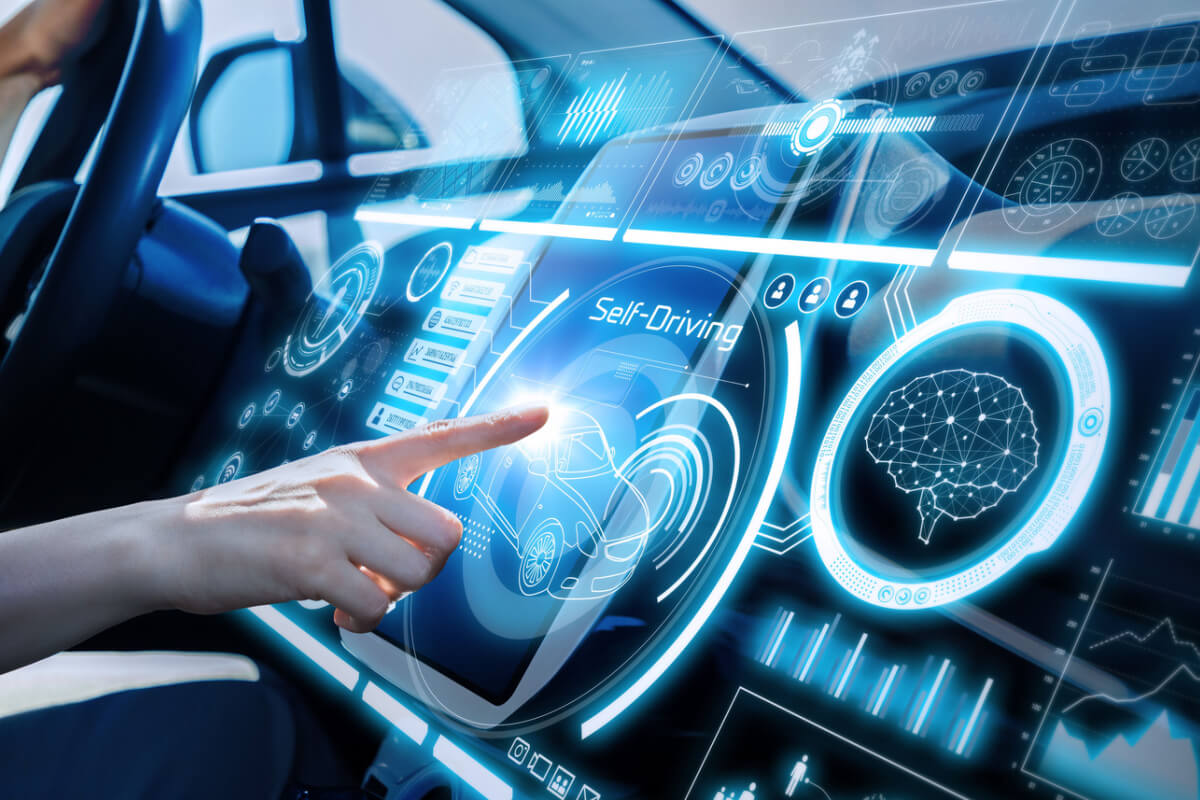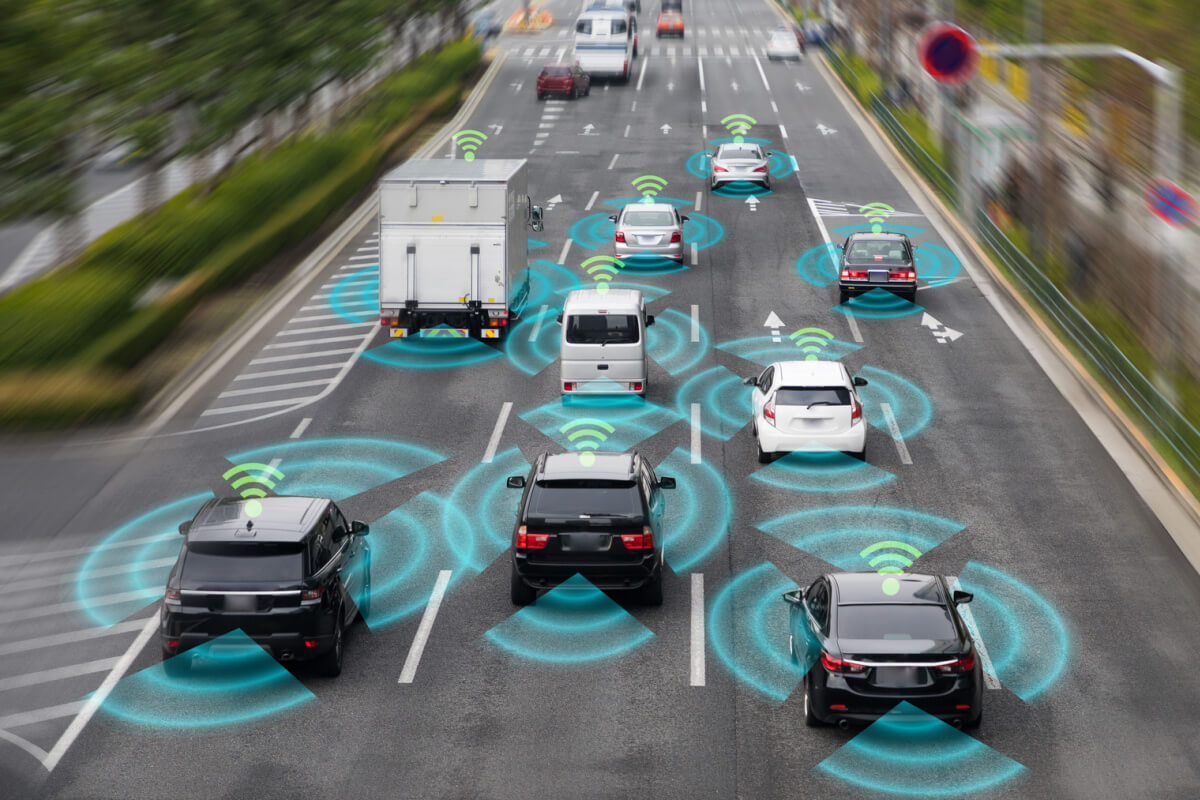- Firm Overview
- Practice Areas
- Testimonials
- Community
- Blog
- FAQ
- Contact
GET A FREE CONSULTATION (702) 680-1111

In spite of the terminology used to describe cars with ADAS (advanced driver-assistance system), such as Tesla’s “Full Self-Driving” software, there are no cars currently on the market with self-driving features that do not require human driver interference to prevent an accident. In a high-profile incident in 2018, during the testing of a self-driving vehicle by Uber in Arizona, a pedestrian was killed. The “safety driver” – a human driver in the vehicle that takes over control of the vehicle if the ADAS has a malfunction, was found to be negligent since they were not looking at the road when the fatal accident occurred.
The liability of the safety driver in causing the accident was obvious – the human driver was supposed to take control of the vehicle to prevent an accident, and they failed to do so.
However, in the court ruling, not only was the safety driver found liable, but so was Uber, the vehicle, the victim, and the state of Arizona. What led to this ruling, and under the law, who is ultimately liable in a self-driving car accident?
What Causes Self-Driving Car Accidents?
As the above example shows, human error can still be the cause of a self-driving car accident. In cars with an ADAS system that are currently on the market, the human driver has to be ready to take control of the vehicle at any time, and if a driver is distracted, speeding, or driving under the influence, they may fail to do so in time to prevent an accident.
Software error can also cause an accident. If a software fails to give accurate instructions to the car’s steering, braking or speed, the car can end up in a collision with another vehicle.
Self-driving cars can be involved in accidents because of mechanical failure. Advanced driver-assistance systems rely on extensive hardware, such as mirrors and sensors. If there is a malfunction, the ADAS may not detect hazards and not direct the vehicle in time to avoid an accident.
Car Accident Liability and the Law
Assigning blame in a self-driving car accident under current laws is complicated, because present-day tort law places the blame for a car accident on the human driver. A self-driving car accident introduces a number of other parties that could be found negligent, including the manufacturers of the car’s hardware, the companies that designed the self-driving car’s software systems, sensors and cameras, and the designers behind the integrated system that makes up the ADAS.
As discussed earlier, statistics reveal how human error causes car accidents – such as aggressive driving, distracted driving, speeding, and drunk driving. There is also evidence of how mechanical failure can cause a vehicle to lose control and contribute to an accident. But a self-driving car operates because of the interaction of an ADAS and a human driver – a very different situation to a conventional vehicle. A recent study at Columbia University aimed to find some answers about how humans respond in their behavior with ADAS, especially the concept of moral hazard. When it comes to self-driving vehicles, human drivers may develop moral hazard by taking more risks when driving, assuming the ADAS will drive safely for them.
A joint effort between the law and engineering departments worked on a rule to determine how fault in a self-driving car accident could be allocated amongst the at-fault parties. The researchers used game theory to describe the ways that self-driving cars, the manufacturers, human drivers, and the legal system interact in order to optimize their goals. For drivers and self-driving cars, it’s getting to their destination in the best and safest way possible; for manufacturers, it’s making a profit; and for lawmakers, it’s making safer and more efficient driving possible.
The team at Columbia University found that a liability policy created to assign comparative fault in a self-driving car accident could influence manufacturers to develop ADAS able to drive more safely and expertly than human drivers, to overcome the complaceny human drivers may feel when behind the wheel. Lawmakers could play their part by making these developments a requirement through regulations, but also attractive for self-driving car manufacturers through tax breaks, for example.
Nevada Laws About Self-Driving Cars
Nevada is one of multiple US states that have enacted laws applying to autonomous vehicles (AVs).
AVs are legal in the state of Nevada, but the driver must have an endorsement on their driver’s license.
Although it is unlawful to use a cell phone while driving in Nevada, it is not illegal to do so when driving an AV.
In order to be operated, tested and/or registered in Nevada, an AV must meet certain conditions. The driver must have insurance.
If a car is converted by a third party to an AV, the original manufacturer of the vehicle does not have liability in case of an accident.
Who Can Be Assigned Fault in a Self-Driving Car Accident?

A plaintiff in a personal injury lawsuit involving a self-driving car could sue the operator of the vehicle (human driver). In Nevada, an operator may or may not be in the vehicle, but is defined as the human that engaged the autonomous technology. The more human interference an AV requires, the more likely a claim can be made against the operator.
If the manufacturer was responsible for installing self-driving technology in the vehicle, they could be considered liable.
A company that converted the car to an AV or installed the self-driving technology is a possible defendant in a personal injury lawsuit.
The creators of the AV software, sensors, cameras and other technology designed for the car to operate safely without human control.
What are Some Defenses Used in Self-Driving Car Accident Lawsuits?
The comparative fault model described earlier could be used by the defendant in a personal injury lawsuit to reduce the damages awarded to the plaintiff. In Nevada, the courts can rule that multiple parties were at fault. If one party is found to be 51% or more at fault, they are required to pay damages, but those will be reduced by the percentage that the other party is found to be at fault.
For example, if a pedestrian is hit by a self-driving car, the judge may assign the pedestrian 35% fault for jaywalking and wearing dark clothing at night. The driver would have to pay the pedestrian’s damages, but the amount would be reduced by 35%.
The defendant could also claim a product misuse defense and attempt to show the plaintiff altered or tampered with the vehicle and compromised its safety.
The increasing number of deadly car accidents across the state of Nevada is alarming. It’s essential to understand the underlying causes of these accidents to prevent them. For instance, driving under the influence of drugs or alcohol is a significant contributor to fatal car accidents in the state. Furthermore, distracted driving has been a growing concern, accounting for a significant percentage of fatal teen driving accidents. It’s crucial for victims and their families to be aware of their rights, especially when dealing with insurance claim delays or settling a car accident injury claim.
We are among the top car accident attorneys in Las Vegas, known for our dedication to achieving the best possible outcome for our clients. Our experienced team will help you claim the compensation you are entitled to. Contact us or call 702-680-1111 today for a free consultation.

As founder of Gina Corena & Associates, she is dedicated to fighting for the rights of the people who suffer life-changing personal injuries in car, truck and motorcycle accidents as well as other types of personal injury. Gina feels fortunate to serve the Nevada community and hold wrongdoers accountable for their harm to her clients.